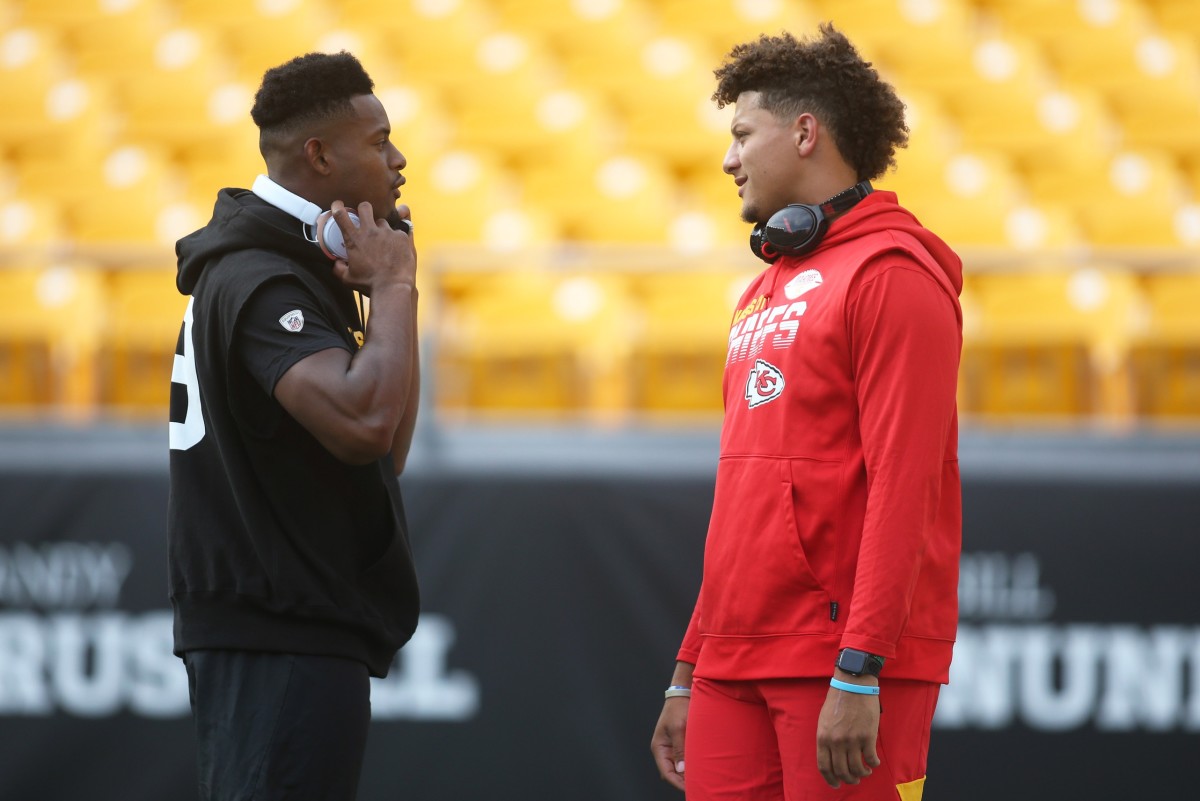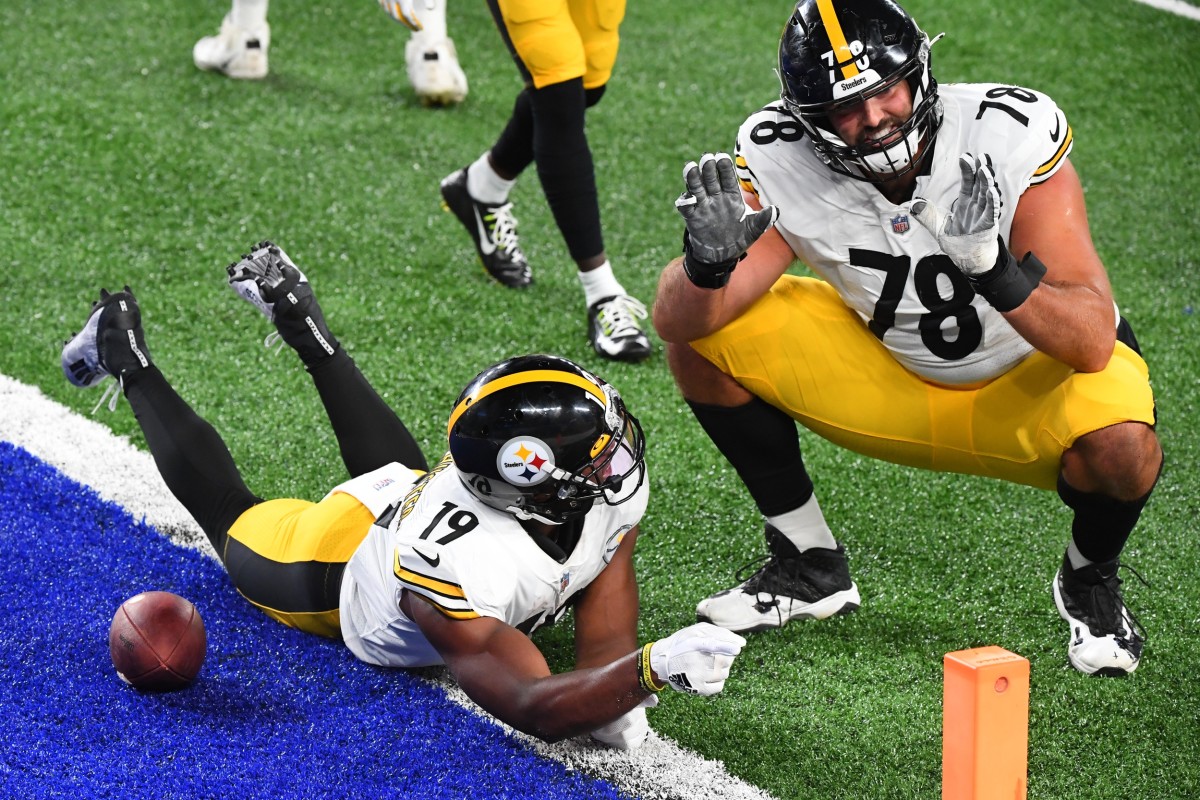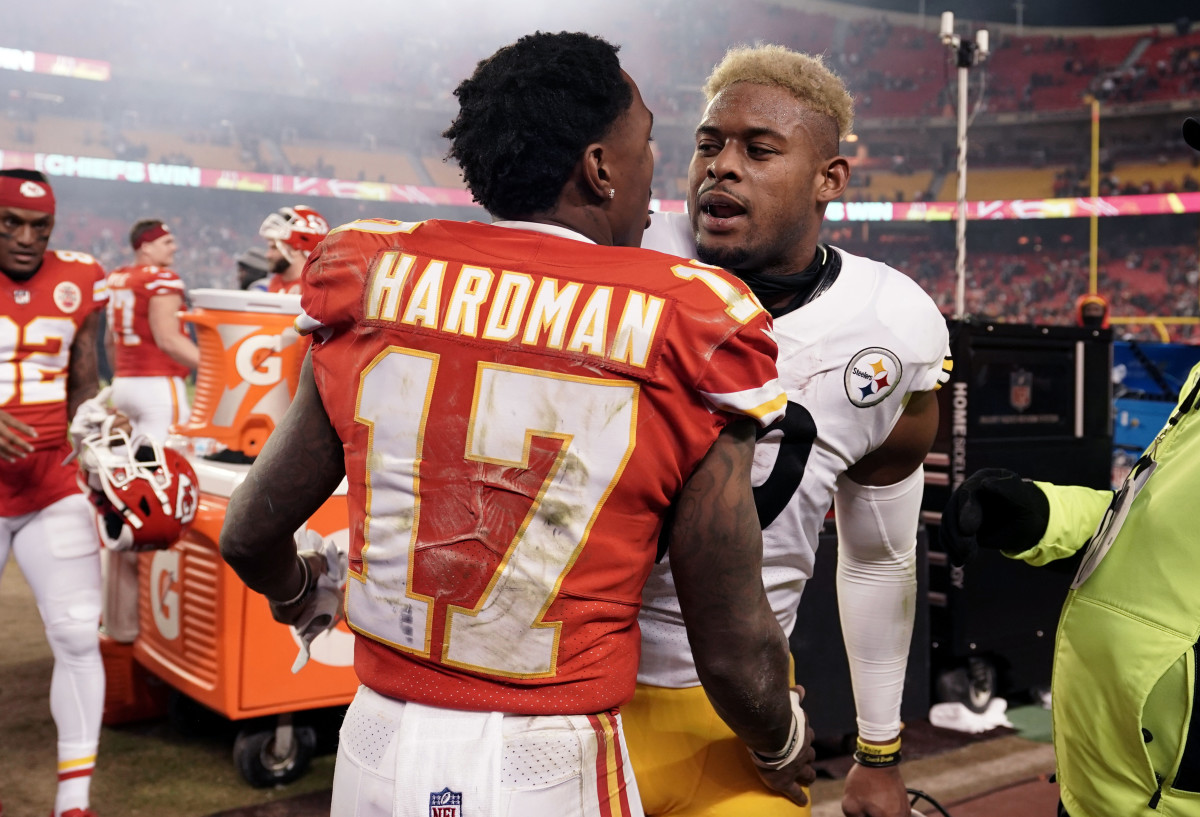Grab a Tinfoil Hat, JuJu Smith-Schuster's Chiefs Contract Might Be Hilarious
When news broke that the Kansas City Chiefs were signing former Pittsburgh Steelers wide receiver JuJu Smith-Schuster to a one-year, $10.75 million deal, the numbers made sense. Despite being relatively cap-tight, the Chiefs could have freed up the necessary space with a procedural Patrick Mahomes restructuring, and roughly $11 million for one year wasn't shocking for Smith-Schuster on a one-year deal.
A few hours after the original news, Mike Garafolo of NFL Network tweeted an update.
The #Chiefs' deal for WR JuJu Smith-Schuster comes in around $3 million on the base value with the rest of the $10.75 million max value @RapSheet reported coming in the form of incentives, sources say.
— Mike Garafolo (@MikeGarafolo) March 18, 2022
"The #Chiefs' deal for WR JuJu Smith-Schuster comes in around $3 million on the base value with the rest of the $10.75 million max value @RapSheet reported coming in the form of incentives, sources say."
Incentives are commonplace in NFL contracts, offering players bonuses for good performances and giving teams some protection from a player who may disappoint on a new deal. But Smith-Schuster's specific situation may have brought a unique wrinkle to the Chiefs' deal with their new receiver.

First, a quick disclaimer: this is speculative. From here on out, we're connecting dots without a complete picture, as of the publishing of this article. But, if my tinfoil hat theory has any merit, the Chiefs did something fun (yes, fun!) with the Smith-Schuster contract.
There are two types of incentives in NFL contracts: "likely to be earned" and "not likely to be earned." As summarized by NFL.com:
Player incentives are considered "likely to be earned" (LTBE) or "not likely to be earned" (NLTBE) based on the player or team's prior-year performance. For example, if a player has a $500,000 incentive for accumulating 10 sacks in the upcoming season and he had 10 sacks the previous season, the incentive is considered LTBE. If he did not record 10 sacks in the previous season, the incentive is considered NLTBE.
Why does that matter? If a player has a "likely to be earned" incentive, the team has to account for that incentive money in the current year's salary cap. If a player has a "not likely to be earned" incentive, that money — if earned — would apply to the next year's cap.

In 2021, Smith-Schuster suffered a season-ending shoulder injury early in the year. Ultimately, he caught just 15 passes for 129 yards and zero touchdowns. Therefore, if the Chiefs wanted to offer Smith-Schuster a deal packed with NLTBE incentives, they could do that at comically low numbers.
Perhaps — again, for speculation and exaggeration — the Chiefs will give Smith-Schuster $2 million for catching one touchdown, $2 million for hitting 130 yards receiving, and $1 million for catching 16 passes. Those numbers feel too low and this whole exercise feels like exploiting an NFL loophole, but those would all technically be NLTBE incentives, meaning that the Chiefs wouldn't "pay" Smith-Schuster that $7 million until the 2023 salary cap, even though the Chiefs and Smith-Schuster would both consider those incentives very likely to be earned on a practical level.

Even assuming that the Chiefs may not have gone quite that extreme and could have set incentives somewhere around the 40-catch/500-yard/five-touchdown mark (or even higher, in a more traditional incentive format), it's hard to imagine that Smith-Schuster would have any incentives in his new deal that would be considered LTBE, based on his injury-shortened season and corresponding statistics. And, of course, there's no guarantee that all of the incentives are practically likely, but for a hotly recruited free agent to agree to a deal that's more than two-thirds incentives, it seems likely that the Chiefs got at least somewhat creative, helping them save a considerable amount of cap space in 2022.
